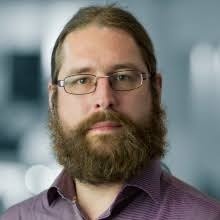Let me start with a brief historical overview: In 2005, the federal government started the so-called Excellence Initiative. This for the first time broke the paradigm that education is the states’ responsibility, and constituted a “revolution” in university funding. A multi-million Euro programme was introduced to improve existing strong areas and research foci of selected universities far beyond previous efforts: The programme emphasised visionary ideas in terms of disruptiveness, interdisciplinarity and structural changes. The University of Stuttgart was successful with the grant proposal “Simulation Technology – From Isolated Numerical Approaches to an Integrative Systems Science (SimTech)”, leading to more than 62 million Euro of funding during the past ten years. After some political debates, the Excellence Initiative was modified to the more sustainable Excellence Strategy, and after a re-orientation to also include Data Science aspects, the Cluster of Excellence “Data-integrated Simulation Science” (EXC SimTech) received funding from 2019 to 2026 of more than 50 million Euro.
A lot of structures and measures were started during the first funding period, for instance a consecutive elite Bachelor and Master study programme and a graduate school with more than 120 PhD degrees awarded so far. The Stuttgart Centre for Simulation Science ( SC SimTech ) serves as a faculty-like “container” for the cluster, the study programme and the graduate school. As a side note, the federal law of the state of Baden-Württemberg was changed to establish the SC SimTech interdisciplinarily, i.e., orthogonally to the existing faculties.
Since images convey a better story than words, I refer to the image movie of the Cluster of Excellence.
Mathematics is not directly included in the image movie. What it its role in SimTech?
The short answer to this question is, boldly speaking: Mathematics in the foundation of Simulation Science. This can be seen by the fact that our department, eight professors, two postdocs and starting in the winter term a new junior professor are directly participating in EXC and SC SimTech with research projects.
The “truth” is of course more multi-faceted, and one could even state that during the past 25 years, we have witnessed the birth of a new scientific discipline, that is rooted in Mathematics and also changes the shape of Mathematics.
Something similar started 100 years ago, when Computer Science was established as a combination of Electrical Engineering in the broader sense, and the formal and structural “pure” Mathematics. Today, “applied” Mathematics, the in the meantime established Computer Science and the Natural, Engineering and Life Sciences crystallise and shape Simulation Science in an interdisciplinary way.
Could you please name examples for the contributions of Mathematics?
We as the Department of Mathematics contribute to all three visionary examples as laid out in the image movie. For instance, two doctoral researchers in my group are working on multi-scale, multi-physics models of muscle recruitment: Colleagues from Biomechanics describe sub-cellular mechanisms like electrical impulses originating from the spinal cord and chances of concentration on cell membranes, that are accumulated over so-called fast- and slow-twitch muscle fibres to explain why the same say arm muscles can simultaneously perform very forceful and very delicate movements. These models have grown incrementally to be very complex, so that very specialised techniques to compute approximate solutions are necessary – you can forget about an explicit “ solution formula”. We develop these methods, and prove bounds for the approximation error. Another important aspect is the rigorous justification of the models, in particular in the “inverse” setting when the muscle movement is not unknown, but one is rather interested to establish the parameters of the models based on measurements.
According to parts of the media, Machine Learning and Artificial Intelligence can solve all problems of this world. In fact, we are far away from this LINK , and often, we cannot explain any more why an algorithm has come to a certain decision. This demystification of Machine Learning, figuratively speaking opening the black box, is a particular research focus of some groups at the ISA and the IANS, and an important aspect of Data Science, Stochastics and Statistics.
You can find many more examples on the web pages of the IANS , ISA , IADM and IMNG.
This sounds fascinating from a research perspective. How can students benefit?
As an ironical person, I like to play with the perception that it is accepted in society to be bad at Mathematics. Thus, I like to say that a good topic for a thesis (at all levels) leads to other people reacting with something like “Oh, this is Mathematics? I wouldn‘t have thought so.” Thesis topics like this, that combine the beauty and rigour of Mathematics with very concrete application questions from Natural, Engineering and Life Sciences, are now more commonly available to students of Mathematics, due to the strong involvement of the Department’s research staff. In addition, thanks to SimTech, the range of application domains of the Mathematicians has broadened substantially over the years, which translates to broader professional profiles after graduation.
During the master programme, it certainly cannot hurt to work on real research questions, either as HiWi or in a thesis. The Cluster of Excellence offers many opportunities for this. And of course, the interdisciplinarity that drives SimTech is directly translating to improved lectures, as real application problems out in the wild. I missed this during my undergraduate studies.
Prof. Dr. Dominik Göddeke
Institute of Applied Analysis and Numerical Simulation
Chair Computational Mathematics for Complex Simulation in Science and Engineering


